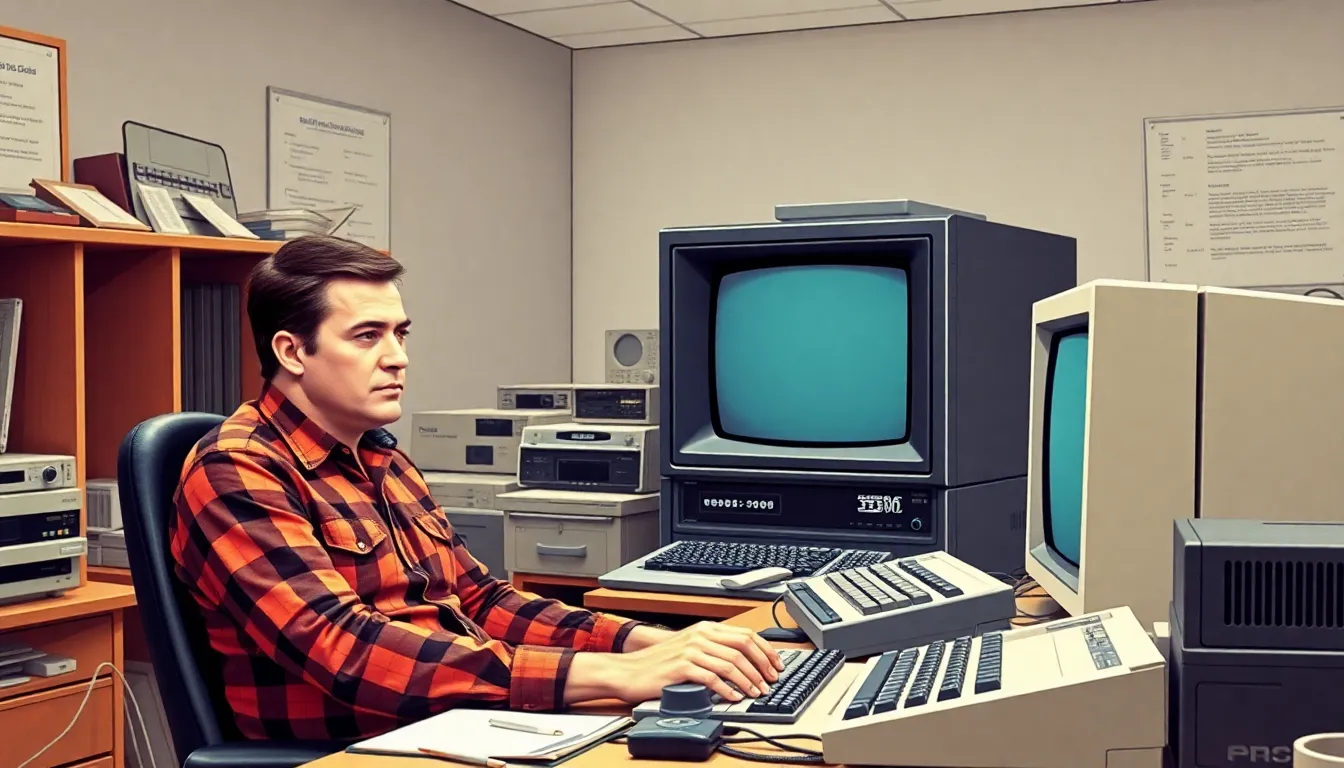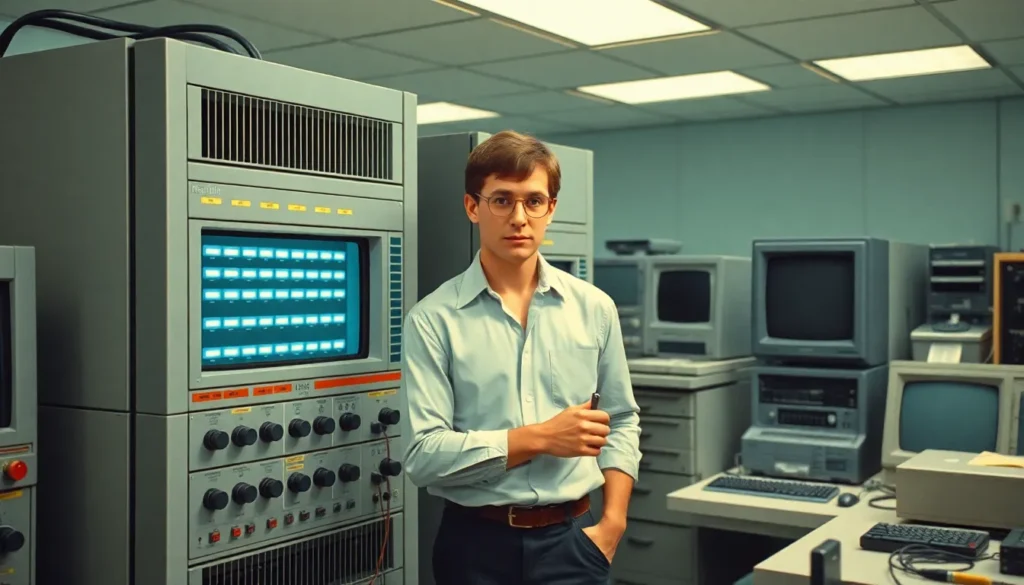In the 1970s, computers were the quirky, awkward teenagers of technology. They were big, clunky, and required a small army to operate, yet they laid the groundwork for the digital revolution. Imagine a world where the most advanced machines were the size of a room and could only perform a handful of tasks—like a teenager trying to figure out how to do laundry for the first time.
Despite their limitations, these early computers sparked a fascination that would change the world. They were the unsung heroes of innovation, paving the way for the sleek, powerful devices we rely on today. Dive into the fascinating journey of how these behemoths transformed from novelty items into the backbone of modern life, proving that even the most awkward beginnings can lead to extraordinary outcomes.
Computers In The 70s
Computers in the 1970s showcased significant technological advancements despite their bulky designs. They primarily operated on vacuum tubes and transistors, which made them less efficient than modern counterparts. IBM introduced the System/360 family, a milestone in mainframe computing, offering versatility to many organizations. Microprocessors emerged around this time, revolutionizing computing by making machines more compact and accessible.
Group projects involving engineering and research often utilized these early computers, demonstrating their capacity to handle complex calculations. PDP-11, developed by Digital Equipment Corporation, became renowned for its affordability and flexibility, allowing smaller businesses to engage with computing.
Programming languages like FORTRAN and COBOL gained popularity, enabling better software development. By the decade’s end, hobbyist projects began appearing, reflecting a growing interest in personal computing. Notably, the Altair 8800 emerged in 1975, inspiring enthusiasts and kickstarting the home computer market.
Widespread usage in academia and industry marked this era, with computers performing tasks ranging from data processing to scientific research. Despite limitations, these machines laid a crucial foundation for future innovations, bridging the gap between theoretical potential and practical application. The fascination with these machines paved the way for the personal computer revolution of the 1980s.
Key Developments

The 1970s marked a transformative period for computers, characterized by groundbreaking innovations in hardware and software.
Hardware Innovations
IBM launched the System/360 family, establishing a new standard in mainframe computing. This line provided scalability for various organizational needs. Meanwhile, the advent of microprocessors allowed for compact architectures, revolutionizing how computers were built. The Intel 4004, released in 1971, served as the first commercially available microprocessor, paving the way for smaller devices. As technology advanced, computers transitioned from bulky formats to more user-friendly designs, making them accessible to a broader audience. The PDP-11 emerged as a popular choice for smaller businesses due to its affordability and versatility, enabling countless engineering and research applications.
Software Advancements
Programming languages evolved significantly during this decade. FORTRAN and COBOL gained widespread adoption, improving software development efficiency. These languages facilitated complex calculations and data processing tasks, increasing productivity across industries. The demand for more user-friendly interfaces spurred the growth of software applications. Early development of operating systems, such as UNIX, provided multi-user capabilities that streamlined workflows. By the late 1970s, hobbyist communities began exploring personal computing through software experimentation, leading to a burgeoning interest in home computing. The introduction of software tailored for microcomputers set the stage for future innovations, further integrating technology into daily life.
Notable Computers of the Decade
The 1970s was a transformative era in computing, featuring groundbreaking machines that set the stage for future innovations.
The Altair 8800
Released in 1975, the Altair 8800 is recognized as one of the first commercially successful personal computers. The design utilized the Intel 8080 microprocessor, allowing enthusiasts to assemble their own systems. By offering a DIY kit, it attracted a wave of hobbyists eager to explore computing. The 8800 sparked significant interest in home computing and inspired many future devices. It also led to the development of software, including Microsoft’s first product, Altair BASIC.
The Apple II
Launched in 1977, the Apple II became one of the first highly successful mass-produced microcomputers. Its architecture featured an open design that promoted expansion and upgradeability. Users enjoyed color graphics and a built-in keyboard, making it more user-friendly than previous models. The Apple II’s software library quickly expanded, supporting a variety of applications from education to business. Notably, it set new standards for personal computing and established Apple as a leading company in the tech industry.
Impact on Society
Computers in the 1970s significantly influenced various aspects of society, particularly in education and business.
Education and Learning
Computers transformed the educational landscape by introducing innovative learning tools. Students began to engage with computers for research and data analysis, enhancing their learning experiences. University curricula adapted to include programming languages like FORTRAN, equipping students with relevant skills. Educational institutions utilized mainframes for administrative tasks and research, improving operational efficiency. The advent of computers also spurred interest in computer science, leading to the establishment of dedicated departments in universities. Furthermore, software development for educational purposes gained momentum, resulting in interactive programs that made learning more engaging.
Business Applications
Businesses adapted quickly to the potential of computers during the 1970s. Large organizations leveraged mainframes for data processing and inventory management, streamlining operations. The growth of microprocessors opened computing access to smaller companies, allowing them to compete effectively. Businesses also utilized software applications to improve productivity, with programs like spreadsheets enabling better financial planning. Management information systems gained popularity, aiding in decision-making processes through data analysis. As a result, computers increasingly became essential tools for enhancing efficiency and managing resources in the business sector.
Conclusion
The 1970s marked a pivotal era in the history of computing. Despite their limitations these early machines sparked a revolution that would shape technology for decades to come. The innovations in microprocessors and programming languages laid the groundwork for the personal computing boom that followed.
As computers transitioned from bulky mainframes to more accessible personal devices they began to infiltrate various sectors including education and business. This decade not only showcased the potential of computers but also ignited a passion for technology that continues to drive advancements today. The foundations laid in the 70s are a testament to how innovation can emerge from humble beginnings.



